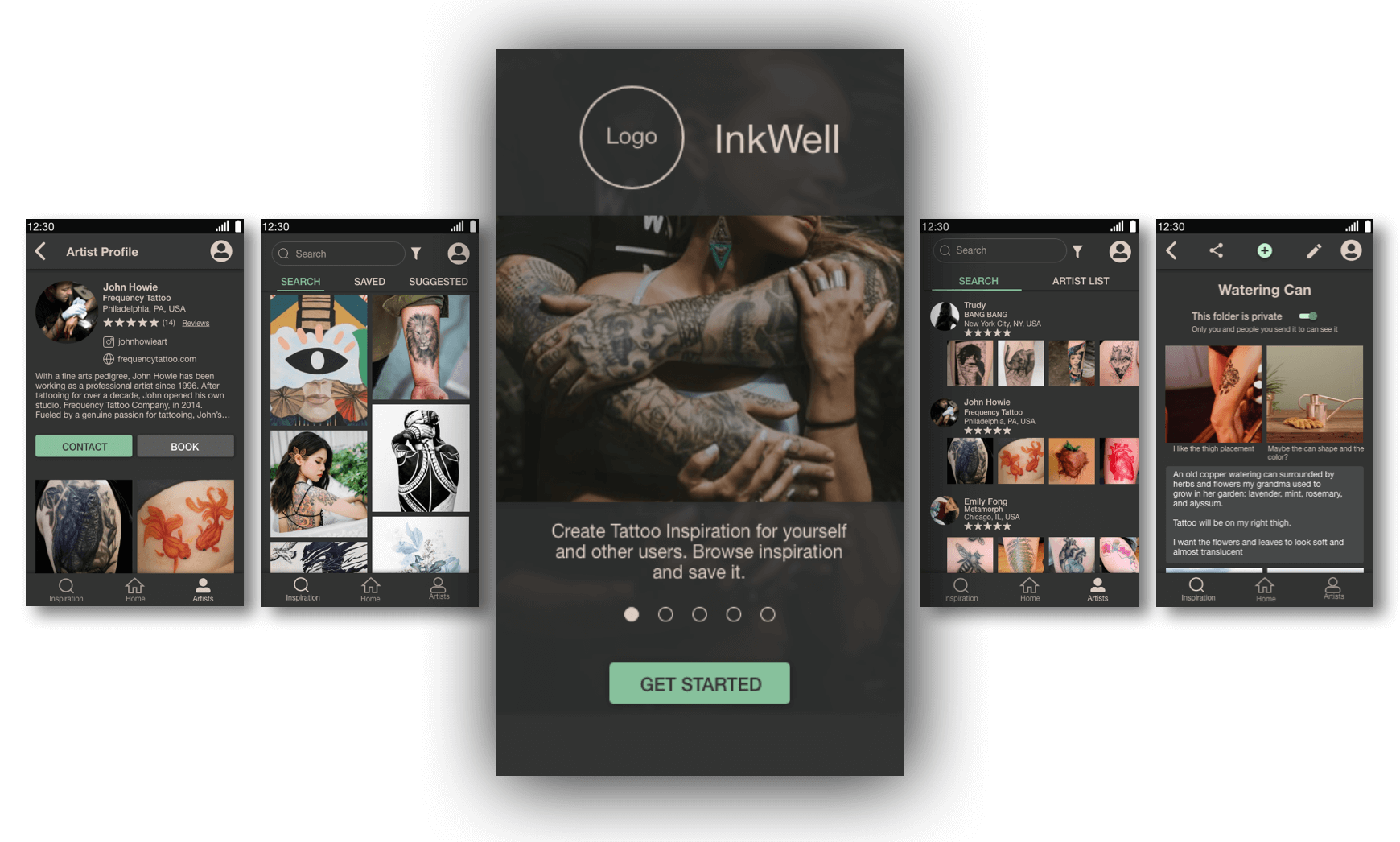
InkWell
Role: UX Designer
Overview
The objective was to create an application which would address the complexity an emotional element of finding the right design and tattoo artist. The goal of this project was to explore and improve the experiences people have while finding a tattoo, getting a tattoo, and after they’ve received a tattoo.
Process
The following covers the basic process I followed during this project. This is a glimpse into the many steps I took to concept and design the Inkwell Prototype
Defining the Problem
Problem Statement:
- Our tattoo-seeking user needs a way to collect and organize all their ideas and inspirations for possible future tattoo(s) in one place. They will also need to find an artist to give the tattoo and the experience the user desires. Getting a tattoo is an emotional and often permanent decision which can either allow a person to accurately express themselves or distort their self expression.
- We will know this to be true when the app has positive reviews and when users are actively collecting tattoo inspiration and then posting reviews about the artists they used to get their tattoo.
Potential User Problems
- Users may have a lot of tattoo inspiration, but don’t have a way to keep everything in one place with a clean way to sort, view, annotate and display their inspiration.
- There are a lot of platforms where a user might find inspiration (Instagram, Pinterest, google search, etc.). If there is no easy way to import from other platforms, the app will be too time expensive and a user will not want to use the app.
- Users new to tattooing may not know what styles they like
- Users may want to know about the experience others have had (and the one they might expect to have) with a given artist.
- Users may want to share (or not share) their inspiration with other users
Potential User Solutions
- Provide an app that allows users to sort and store their inspiration in a design board or web of design boards.
- InkWell should have a functionality that lets users easily gather information from other platforms as well as from the InkWell to put in their collections.
- The app could provide resources on what each style is as well as allowing users to search through categories.
- InkWell could allow users to share their experiences with certain artists as well as before and after photos.
- The app will allow users make their inspiration collections public or private as well as allowing users to share their boards with specific people. This app will also allow users to export their boards into a pdf for printing or e-mailing so they can share with their friends or artist.
Research
Competitor Analysis
To help further explore the problem and possible solutions, I conducted competitor research. As part of the competitor research, I chose Tattoodo, because it does attempt to address some of the emotional issues that users have while finding a tattoo.

Tattoodo (https://www.tattoodo.com/) is a potential competitor which offers a way for users to collect tattoo inspiration, get information about tattooing, and find artists and studios.
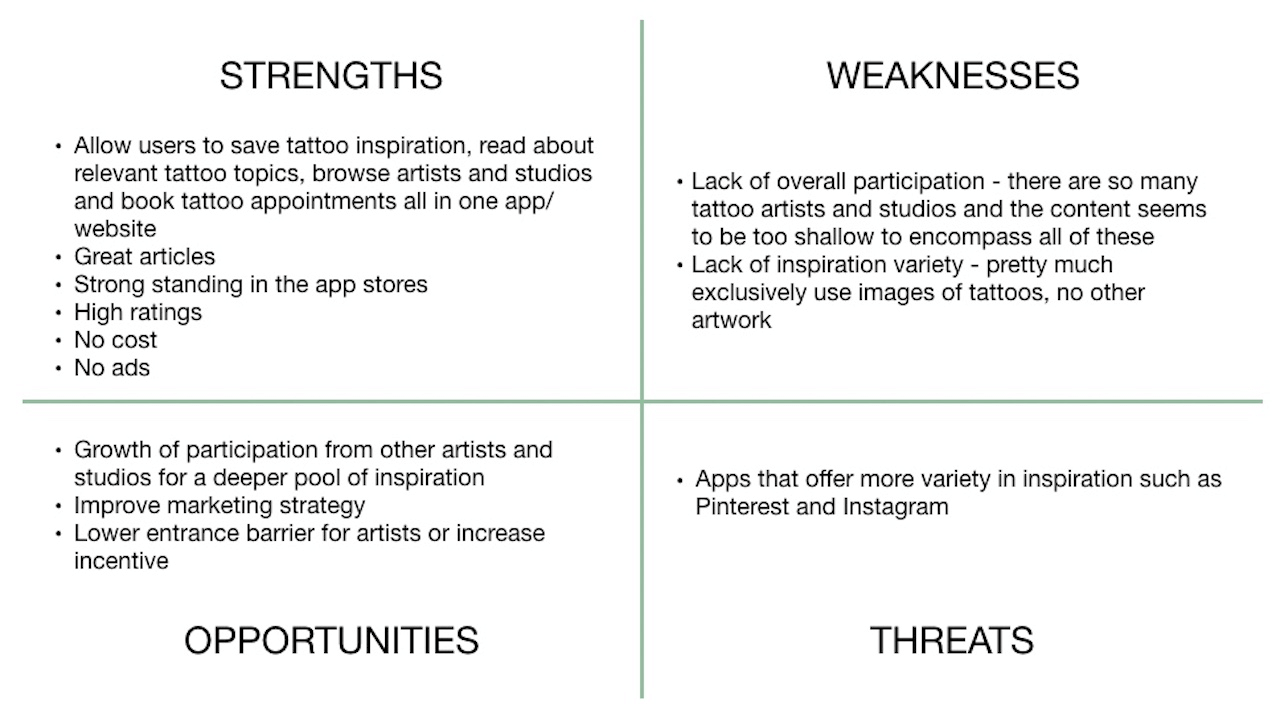
If you’d like a more in depth review of Tattoodo please see the full competitor and UX analyses:
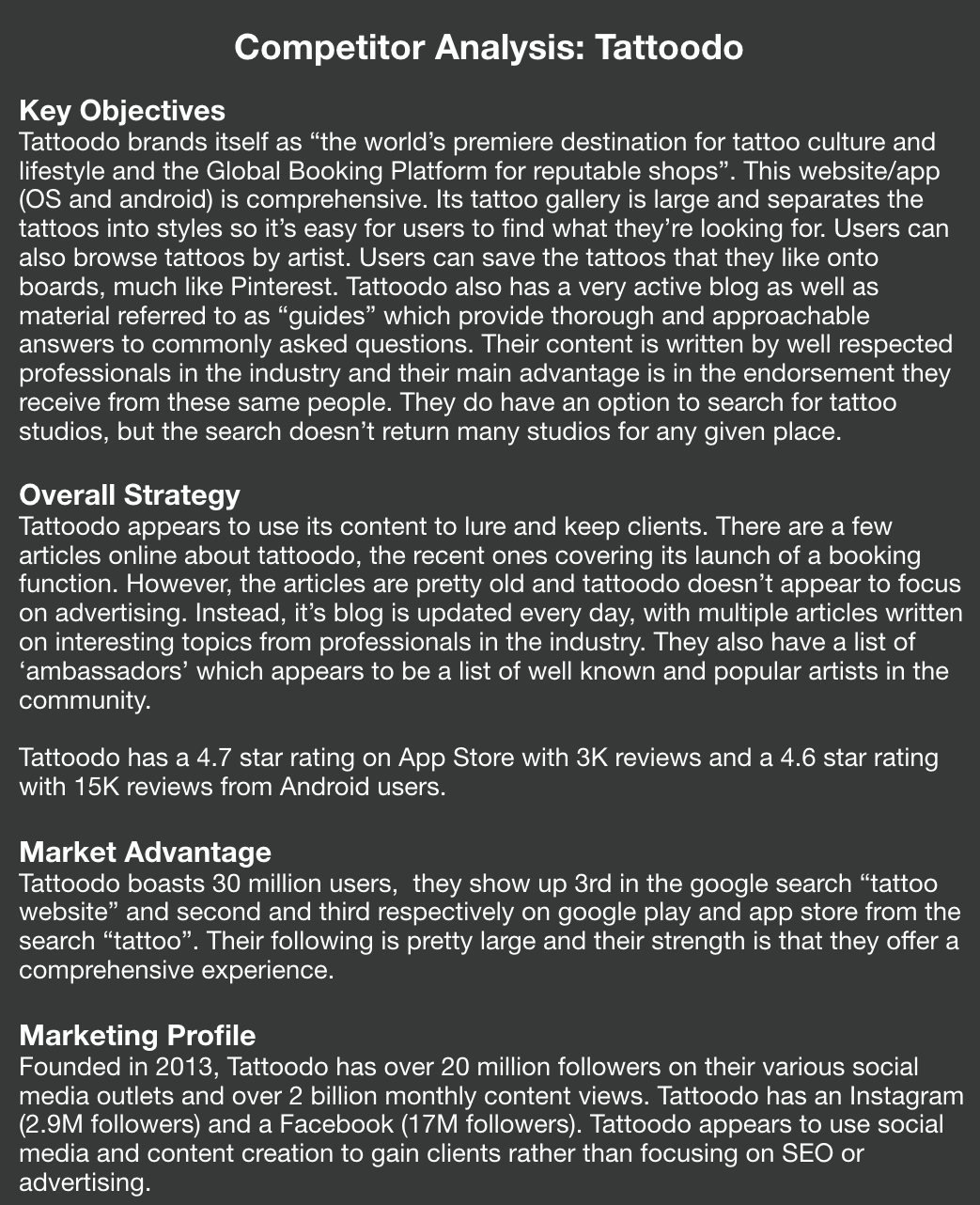
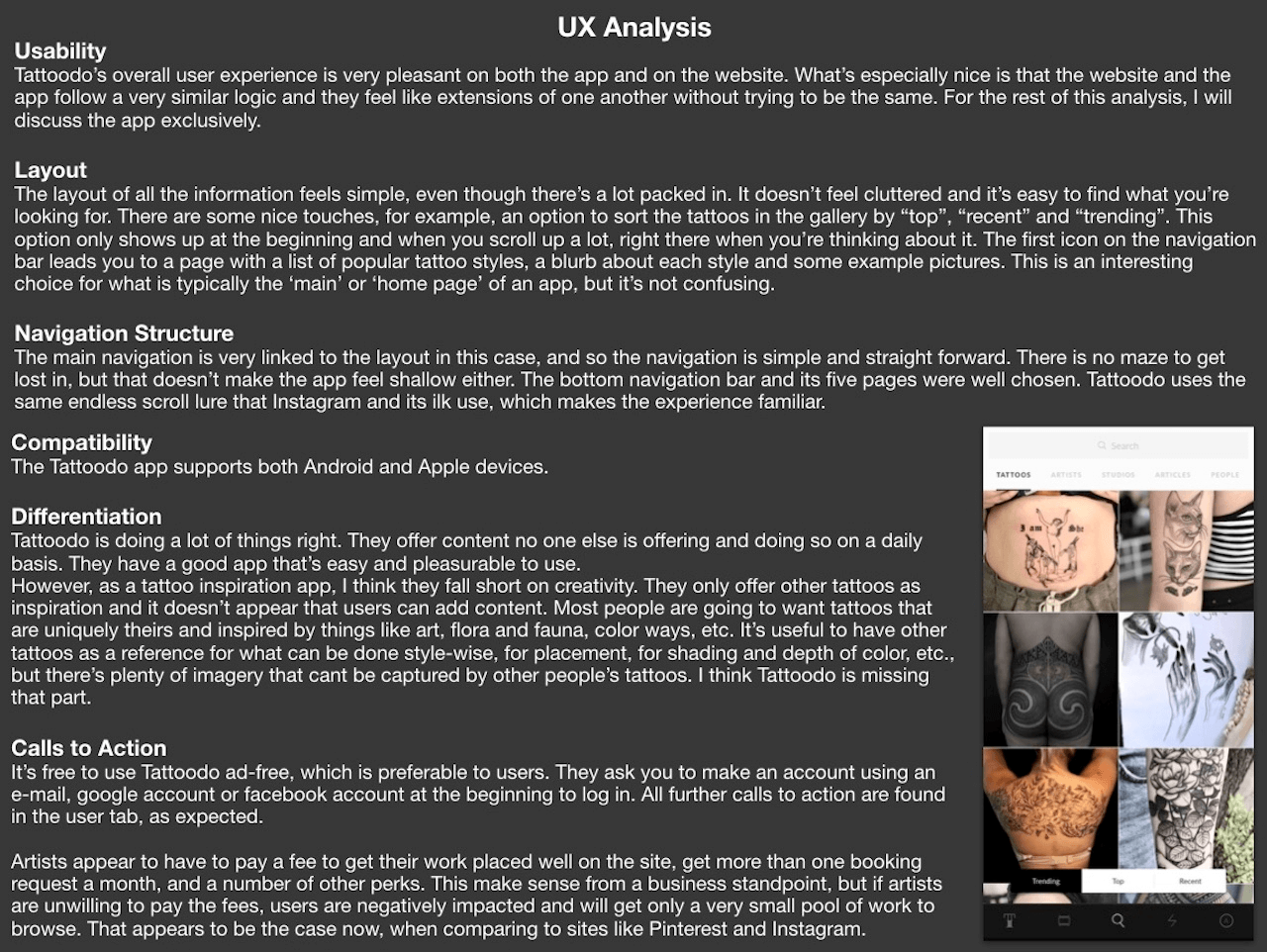
Surveys and Interviews
To start understanding the user, I wanted to see what they look for when searching for a tattoo.

Research Goals
- Determine how users currently source tattoo inspiration
- Find out functionalities users want in a tattoo app
- Discover how the user views and expectations towards the relationship between a tattoo artist and a client
Insights
Users already have the ideas of what they want in their heads. They use tattoo images as a sounding board. They look for similar tattoos to see if it looks right on the body or if they stylistically like how something was done. “I’m looking for something that’s attempting to convey the meaning that I’m looking for.”
In general, users seemed not to know exactly how they were going to convey their ideas to their artists. There was consensus that it should be an evolving conversation. “That’s hard cause I feel like the next one that I want is really complicated and I’m struggling to figure out how to do that.”
Users don’t view the actual act of getting a tattoo as emotional, however they do view the content as having emotional ties to their lives. “[for me] they’re pictographs of emotional things, but a tattoo is symbolic of the emotions, but the act of getting a tattoo itself is not emotional.”
No single inspiration app allows users to record all their inspiration (screenshots, notes, pins, google search results, pictures taken on the phone), so users tend to keep their inspiration in a number of different places.
User Personas
During research, I discovered that these characteristics didn't fluctuate very much with age, so I didn't feel the need to create an older persona. Once you hit your mid 20's, your prefrontal cortex is more fully developed and your decision making becomes less erratic.
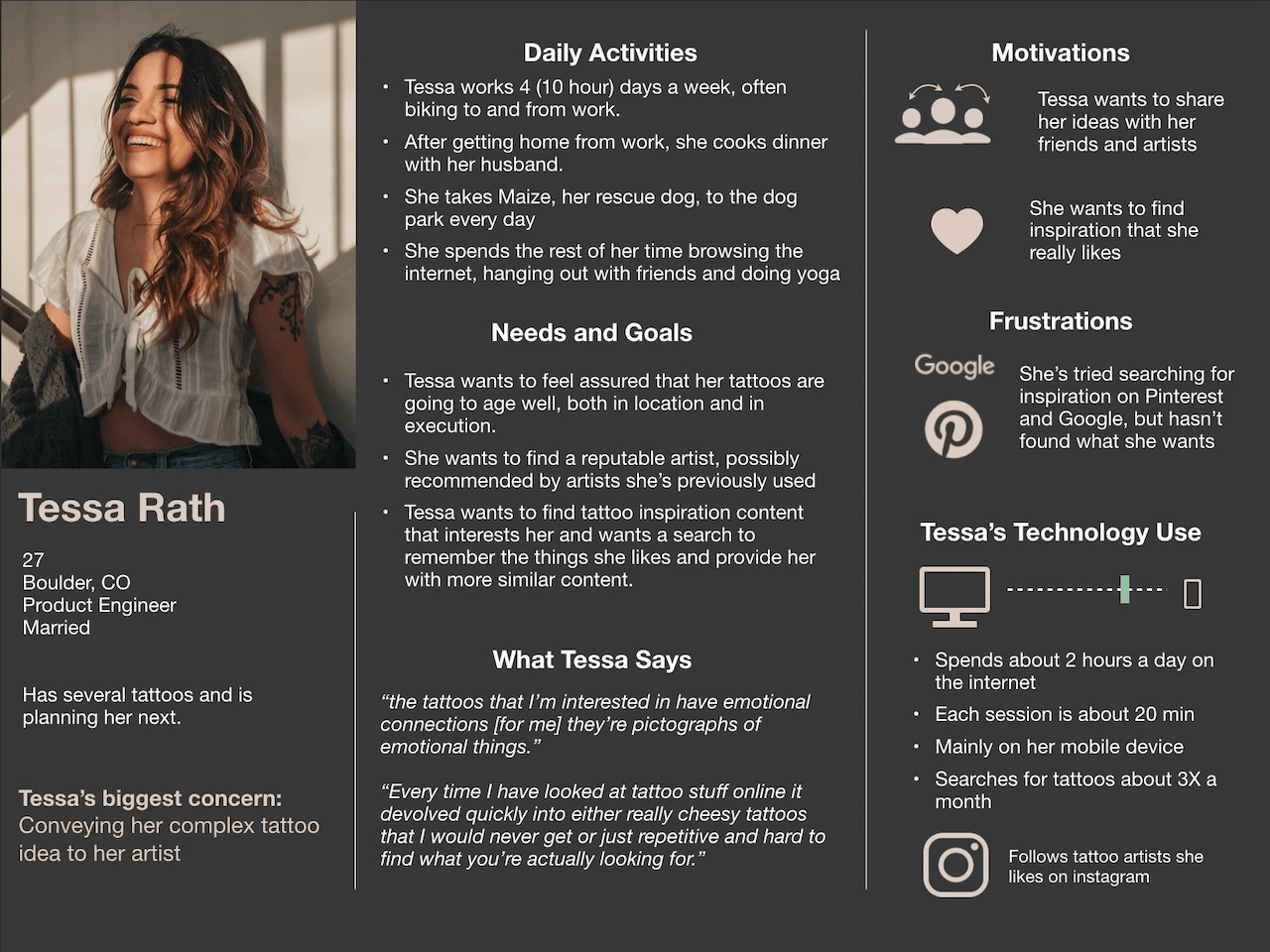
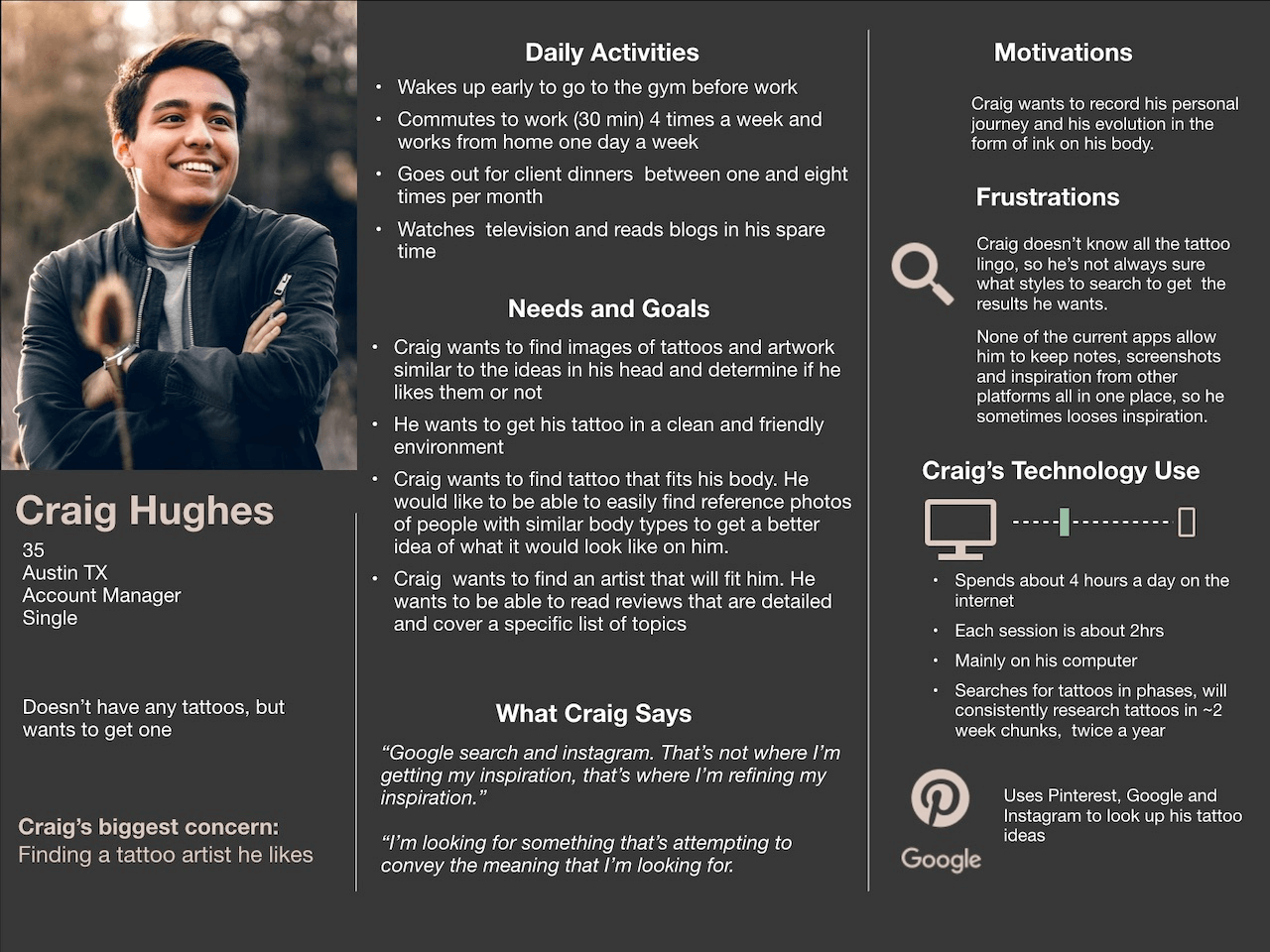
User Journeys
I also followed the personas on relevant user journeys based on likely scenarios. Below is a journey for each persona.

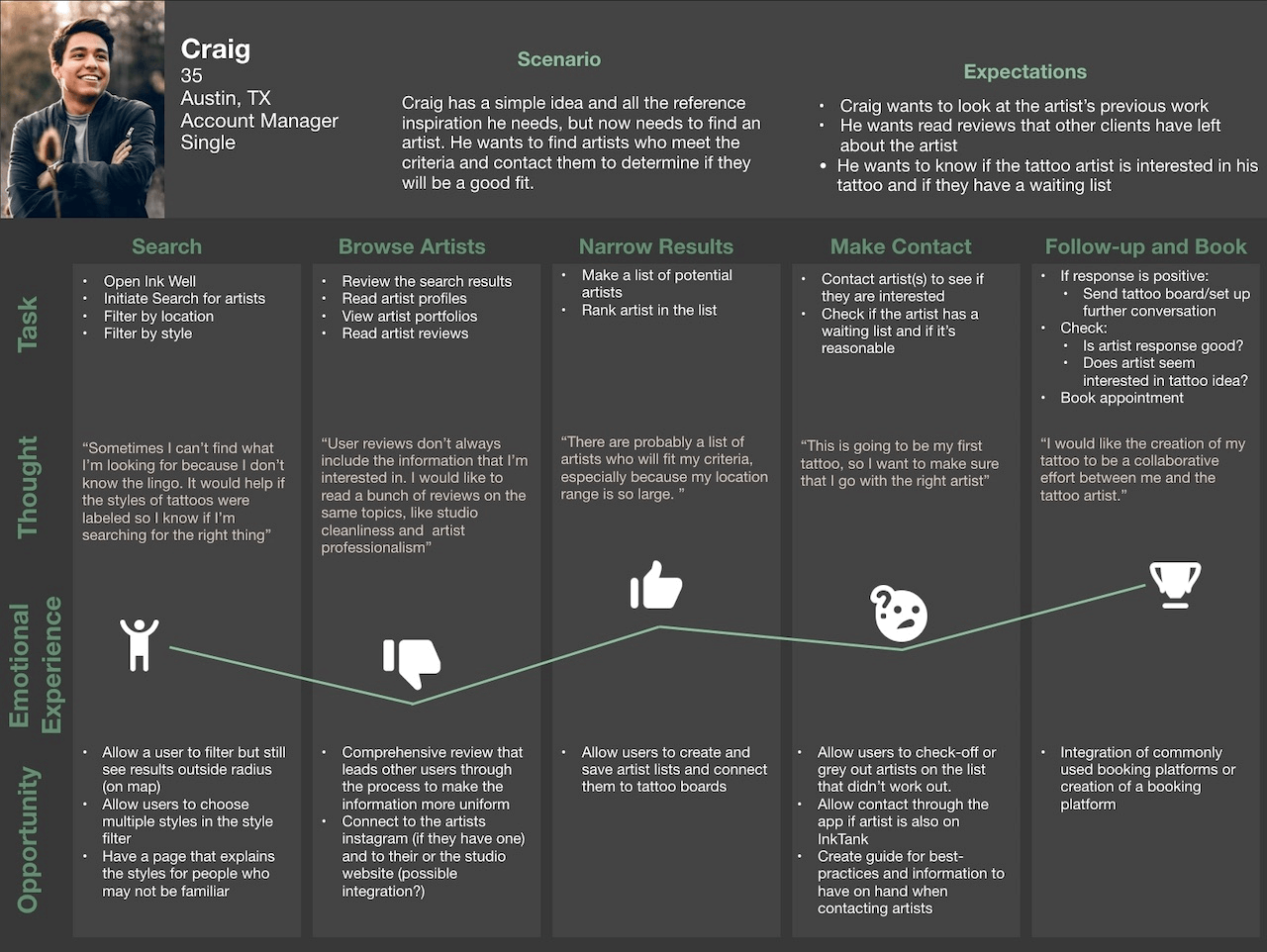
Outlining the Design
Cardsort
I conducted a card sort to get an idea of how I should build the sitemap. I wanted to make sure the user would understand the layout

Sitemap
The cardsort and some user testing informed the final sitemap, below.

Wireframes
After building the sitemap, I started to wireframe the functionalities. The following is a wireframe for leaving a review for a specific artist.

Testing the Design
Usability Testing
Objectives:
- Determine the issues users experience when interacting with the current prototype.
- Find out if users can complete basic tasks.
- Identify pain points in the prototype and solutions which will improve the user experience
Questions to Answer:
- How likable is the on boarding experience?
- Is the the app navigation easy/innate?
- Is the process of saving and referencing saved inspiration logical?
- Does the user understand the difference in functionality between boards and saved items?
- Is the process for reading and leaving reviews for an artist easy?
Method:
perform a combination of in-person and remote moderated tests of 6 diverse participants in the target audience
Participants were given the following tasks:
- Onboard and log into the app
- Save an item in the app and find where it was saved
- Search for an artist using a list of criteria
- Leave a review for an artist
- Send a tattoo board to a friend
Results

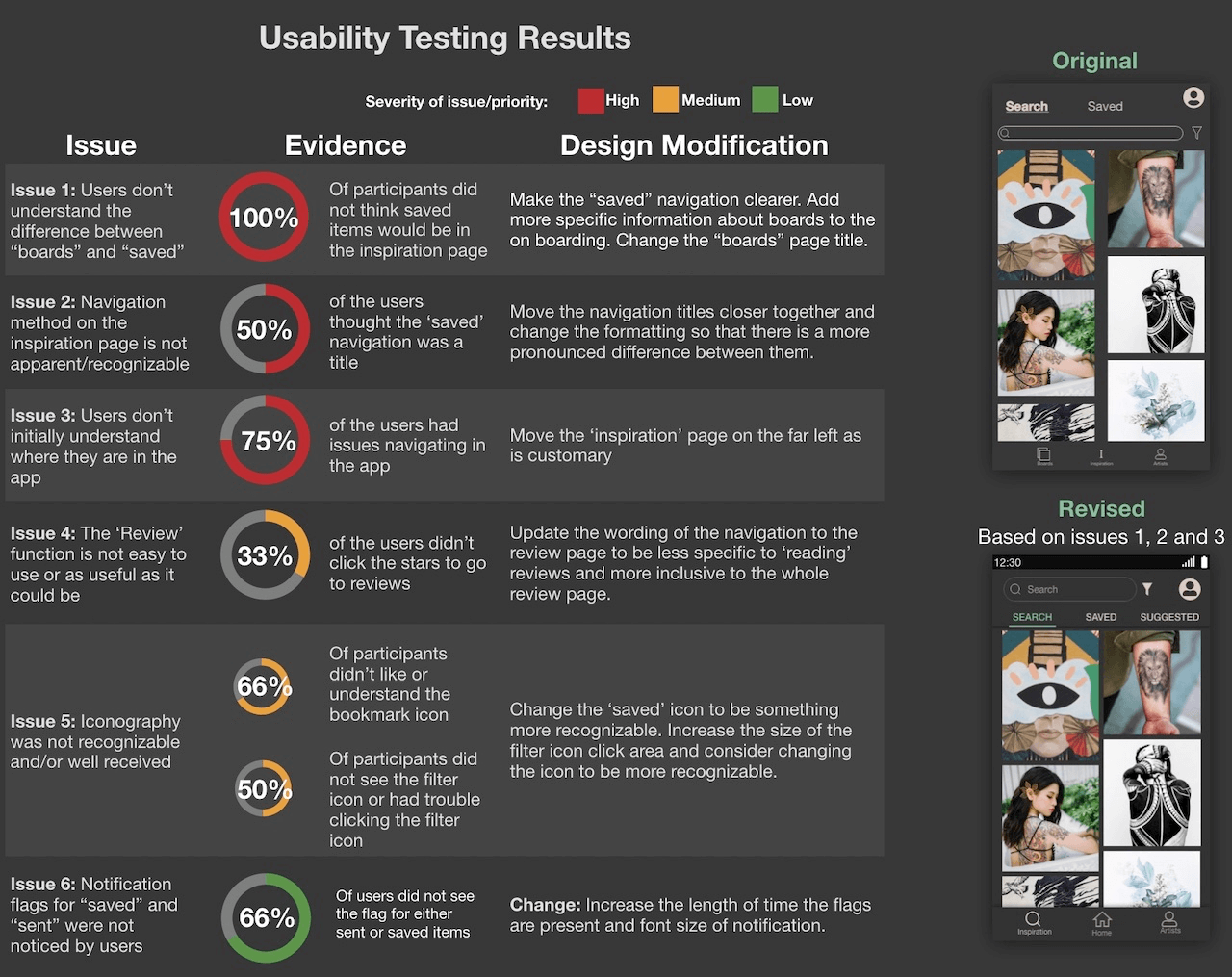
Collaborative Design
I also tested the prototype with a group of other designers to get their feedback. Below are some examples of how I incorporated comments into my design.
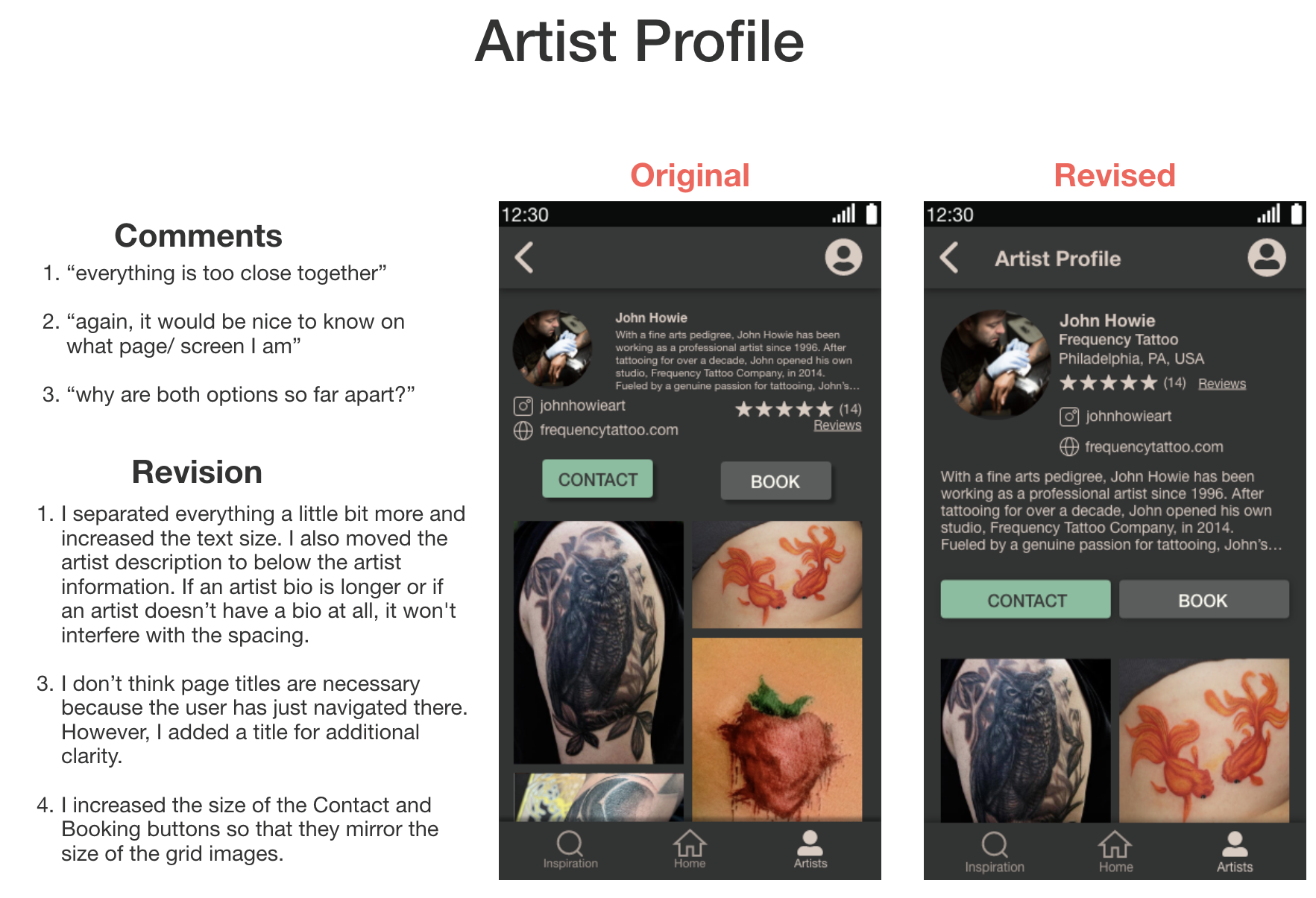
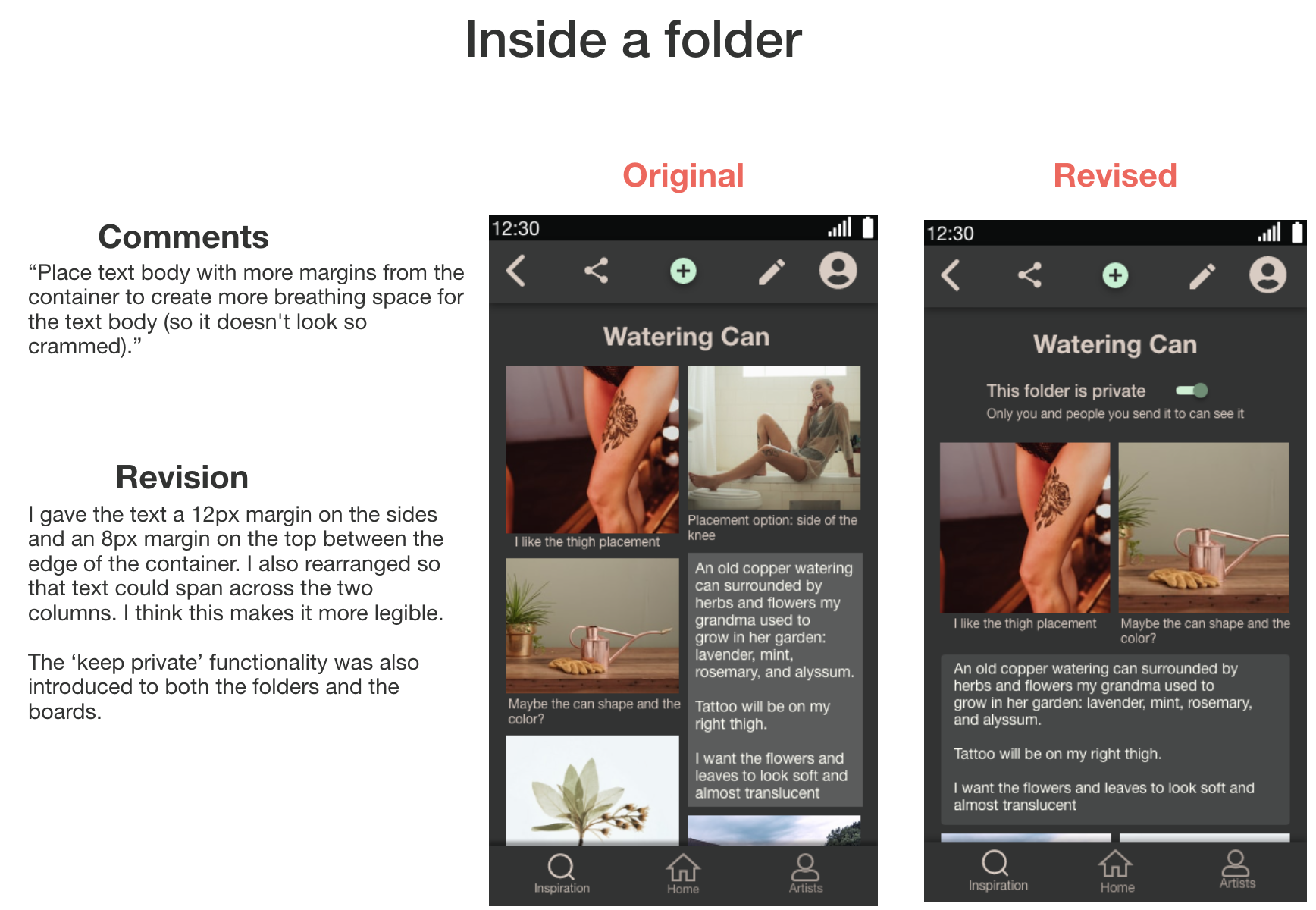

Defining the UI

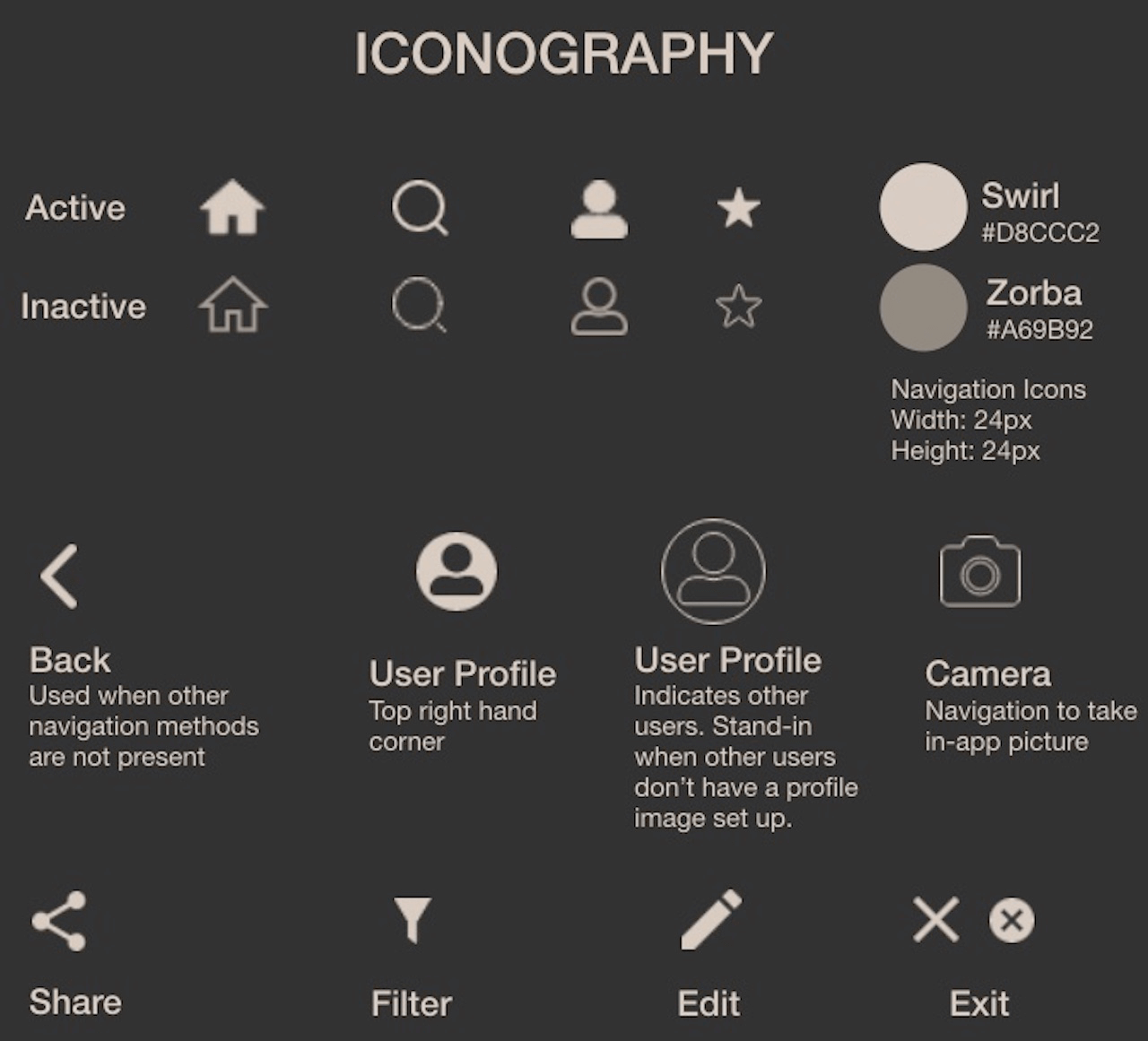
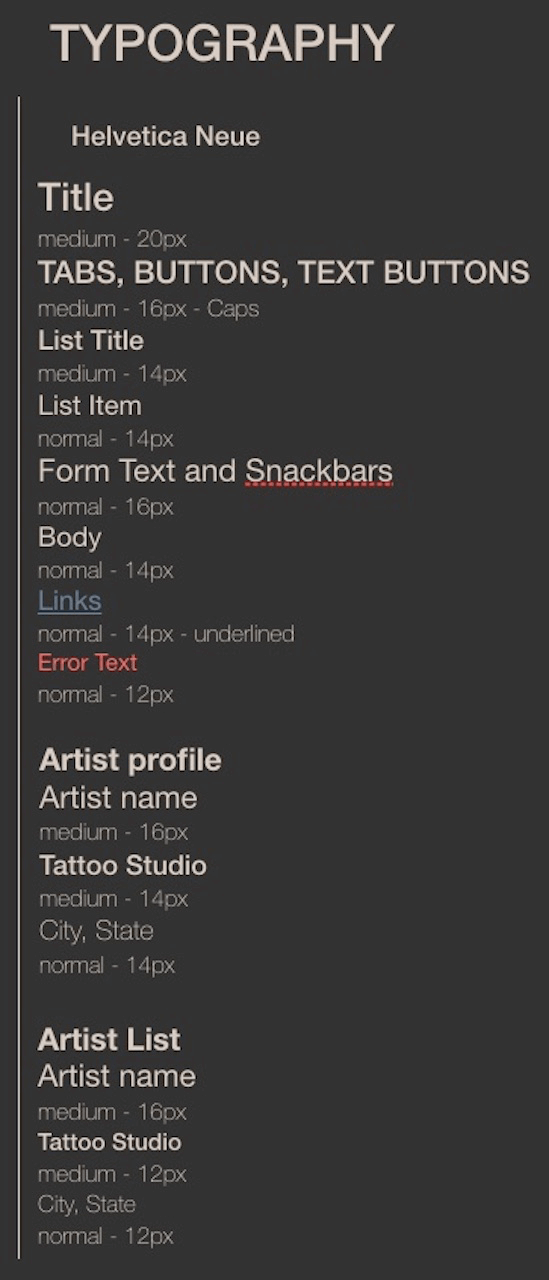


Conclusion
InkWell has some growing to do. There are several aspects of the app which I would like to flesh out more completely and some functionalities which I would like to create. As always, the prototype could benefit from more user testing and revision based on the feedback.
